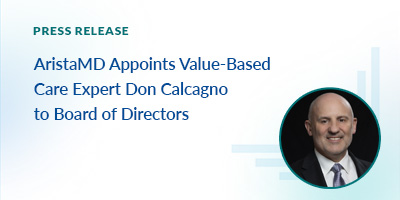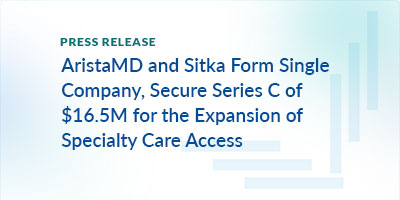News
What’s happening at AristaMD? Find out. Review our news and press releases.
AristaMD: Charting a Human-Centered Future for Healthcare
SAN DIEGO, CA – June 21, 2025—We’re proud to share that AristaMD is featured in Global Healthcare Magazine’s latest cover story, highlighting our SpecialtyCare360 solution and the leadership behind its development.
AristaMD: Revolutionizing Specialty Care Management with Customized Solutions
SAN DIEGO, CA – May 12, 2025—We’re proud to share that AristaMD is featured in Business Talk Magazine’s latest cover story, highlighting our transformative approach to specialty care management.
AristaMD Promotes Jeff Taylor to Vice President of Product Management to Accelerate Healthcare Innovation
SAN DIEGO, CA – May 29, 2025—AristaMD announced the promotion as the company continues customize its comprehensive approach to specialty care…
AristaMD Appoints Value-Based Care Expert Don Calcagno to Board of Directors
SAN DIEGO, CA – April 24, 2025—AristaMD today announced the appointment of Don Calcagno to its board of directors. Calcagno brings extensive healthcare…
AristaMD Launches SpecialtyCare360 to Revolutionize Specialty Care
San Diego, CA – April 10, 2025 – AristaMD announced today the launch of SpecialtyCare360, a suite of services to improve care…
AristaMD Names Jordan Oelschlager as Senior Vice President of Strategic Development
SAN DIEGO, CA – March 25, 2025—AristaMD announced today the appointment of Jordan Oelschlager as senior vice president of strategic development.
AristaMD Names Mike Gierut as Chief Financial Officer to Drive Financial Strategy and Growth
SAN DIEGO – March 13, 2025—AristaMD, technology enabled clinical services organization committed to simplifying access to specialty care, announced today…
AristaMD Names Keith Pinter, Chief Executive Officer, as Company Continues Longitudinal Care Management in Collaboration with Primary Care
SAN DIEGO – May 29, 2024—AristaMD, a clinical services and specialty care coordination company that enables primary care providers to manage risk and…
AristaMD and Sitka Form Single Company, Secure Series C of $16.5M for the Expansion of Specialty Care Access via Electronic and Video Consultation Services
SAN DIEGO – Nov. 14, 2023 – AristaMD, a digital healthcare company specializing in eConsults, today announced it has joined forces with Sitka, a video-consult specialist…









